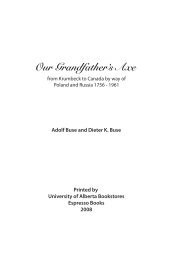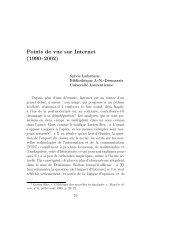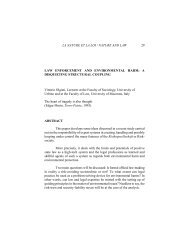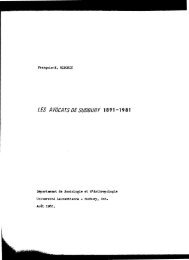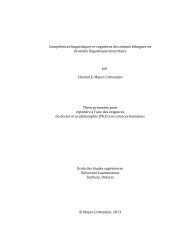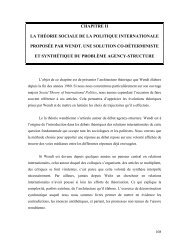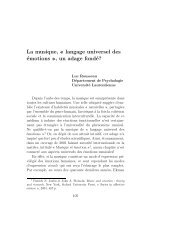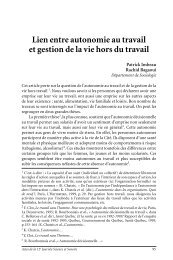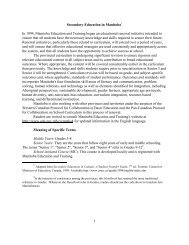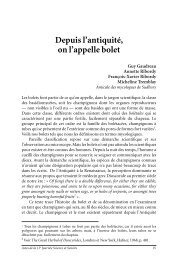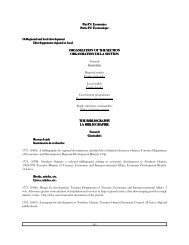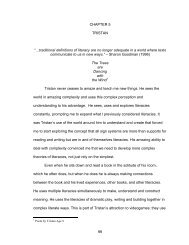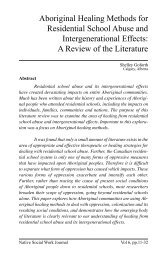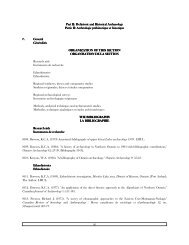NSERC grants at Laurentian University Subventions du CRSNG `a l ...
NSERC grants at Laurentian University Subventions du CRSNG `a l ...
NSERC grants at Laurentian University Subventions du CRSNG `a l ...
- No tags were found...
Create successful ePaper yourself
Turn your PDF publications into a flip-book with our unique Google optimized e-Paper software.
140Arthur McDonald with/avec A. Bellerive, M. Chen, H. Evans,G. Ewan, Jacques Farine, A. L. Hallin, Doug Hallman, C. Hargrove,R. Helmer, R. Hemingway, J. Law, J. Leslie, H. Mak,A. Noble, R. Ollerhead, S. Oser, B. Robertson, D. Sinclair,Clarence Virtue, C. Waltham 3Sudbury Neutrino Observ<strong>at</strong>ory project grant B. On-siteoper<strong>at</strong>ingA grant of $7,100,000 for two years.Une subvention de 7.100.000 $ pour deux ans.Sub<strong>at</strong>omic Physics Project – Projet en physique sub<strong>at</strong>omiqueThe Sudbury Neutrino Observ<strong>at</strong>ory is a large intern<strong>at</strong>ional project tostudy fundamental constituents of the Universe called neutrinos. Observ<strong>at</strong>ionof neutrinos gives inform<strong>at</strong>ion on the thermonuclear processes in the Sunand tests theoretical calcul<strong>at</strong>ions. For over thirty years there was a discrepancybetween these calcul<strong>at</strong>ions and the initial measurements of neutrinosfrom the Sun th<strong>at</strong> had come to be known as the “Solar Neutrino Problem”.Neutrinos are extremely hard to detect. The detector must be placed deepunderground to protect it from n<strong>at</strong>ural cosmic rays and all m<strong>at</strong>erials usedmust be extremely free from radioactivity. SNO uses 1000 tonnes of heavyw<strong>at</strong>er from Canada’s reserves and is loc<strong>at</strong>ed 2 km underground <strong>at</strong> Inco’sCreighton mine near Sudbury, Ontario. The intern<strong>at</strong>ional collabor<strong>at</strong>ion iscomprised of Canadian institutions (Carleton, Guelph, <strong>Laurentian</strong>, Queen’s,UBC, TRIUMF), six from the US and two from the UK.In 2001 and 2002, the SNO collabor<strong>at</strong>ion published papers th<strong>at</strong> provideda clear solution to the “Solar Neutrino Problem”. These results showed definitivelyth<strong>at</strong> about 2/3 of the neutrinos pro<strong>du</strong>ced in the Sun have changedto other types before reaching the Earth, thereby escaping detection in previousexperiments. This process can occur if neutrinos have a finite massbut was not previously included in the most fundamental theories of elementaryparticle physics. The SNO results show th<strong>at</strong> calcul<strong>at</strong>ions of the Sunare very accur<strong>at</strong>e. In 2003, the SNO collabor<strong>at</strong>ion presented further, moreaccur<strong>at</strong>e, results from the second phase of the experiment with salt in the3 The names of the researchers from <strong>Laurentian</strong> <strong>University</strong> are shown in italics./Les noms des chercheurs de l’UniversitéLaurentienne sont en italiques.



